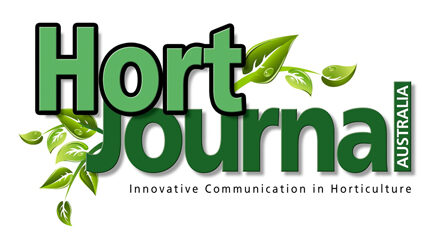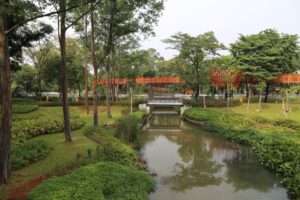
Greener communities, stronger economies:
Unlocking the local economic benefits of green infrastructure
By Michael Casey
Green infrastructure and urban greening deliver a wide range of benefits. It cools our buildings and local environments, supports biodiversity, and helps manage stormwater during periods of heavy rainfall. While these environmental benefits are widely acknowledged, the economic advantages are often viewed narrowly, typically in terms of increased property values, higher building occupancy rates, and elevated sale prices.
What is often overlooked is the direct economic value that green spaces bring to the communities who use them. From improving local health outcomes and reducing energy bills, to creating local jobs and revitalising small businesses, urban greening contributes not just to sustainability, but to the everyday economic resilience of families and neighbourhoods.
However, access to these benefits is far from equal. Many cities still lack the resources, finances or infrastructure to implement sustainable solutions at scale, and the technologies needed to reach net-zero emissions by 2050 are not yet widely available or affordable. In the meantime, deep socio-economic inequalities persist between city centres and their outer suburbs. Vulnerable populations, often concentrated in under-resourced fringes, can experience urban heat up to five degrees higher than affluent areas, largely due to limited access to cooling, poor insulation, and inadequate building standards. These inequalities underline the urgency of inclusive green infrastructure and urban greening policies that prioritise both environmental and social equity.
Governments have historically taken the lead in infrastructure financing, but public investment alone cannot bridge the urban infrastructure funding gap due to the high capital costs involved. With increasing demands on limited public funds, collaboration between the public and private sectors is becoming an increasingly attractive solution.
Let’s explore examples from around the world how they have transformed the lives of millions.
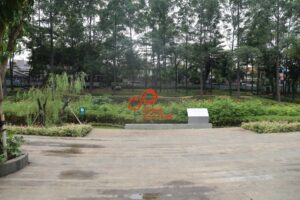
Community economic benefits of Tebet Eco Park, Jakarta
Tebet Eco Park in South Jakarta is a strong example of how urban greening can deliver direct economic benefits to local communities. Developed through a public-private collaboration involving the Jakarta Provincial Government and corporate sponsors and private sector companies, the project demonstrates how shared investment can create inclusive, multifunctional green spaces.
Since its revitalisation, the park has significantly boosted local commerce, with vendors reporting up to a 30% increase in turnover due to the rise in visitor numbers. Small and medium enterprises (SMEs), such as food stalls and plant sellers, benefit from dedicated spaces within the park, helping preserve local livelihoods while enhancing the visitor experience.
The project also generated employment opportunities through construction, maintenance, and event operations, contributing to economic inclusion in the area. While efforts to incorporate Betawi cultural programming remain limited, the park holds potential to further support local artisans and performers.
Despite its success, challenges like overcrowding, traffic, and waste have emerged. Managing these issues is key to sustaining long-term benefits and in some cases have provided business opportunities for residents assisting with parking vehicles. Tebet Eco Park shows how public-private collaboration in green infrastructure can drive community-level economic growth and resilience.
Community economic benefits of green roofs in Rio’s favelas
In Rio de Janeiro’s Parque Arará favela, the Teto Verde Favela initiative has transformed rooftops into green spaces, delivering both environmental and economic benefits to the community. Founded by local resident Luis Cassiano, the nonprofit teaches residents to construct lightweight, cost-effective green roofs using materials like bidim, a recycled polyester fabric, making the solution accessible for informal housing structures.
These green roofs mitigate the urban heat island effect, reducing indoor temperatures by up to 40%, which lowers reliance on electricity for cooling. This not only decreases utility expenses for residents already struggling with financial burdens but also lessens the strain on the local power grid
The initiative fosters community engagement by involving residents, students, and volunteers in the construction and maintenance of the green roofs. This collaborative approach enhances environmental awareness and provides skill-building opportunities, contributing to local economic resilience.
By adapting green infrastructure to the unique challenges of favelas, Teto Verde Favela exemplifies how community-led efforts can drive sustainable development and economic empowerment in underserved urban areas.
Community-led economic recovery in Rodrigo Bueno, Buenos Aires
The socio-urban integration of Rodrigo Bueno, a once-informal settlement bordering Buenos Aires’ Costanera Sur Ecological Reserve, exemplifies how community-driven greening initiatives can foster economic resilience. Beginning in 2016, the Buenos Aires Housing Institute collaborated closely with residents through participatory governance structures, ensuring that urban upgrades addressed local needs and aspirations.
A notable outcome of this collaboration is La Vivera Orgánica, an organic nursery established in 2019 by 14 local women. Supported by the city, the nursery cultivates native plants and vegetables, supplying produce to local businesses, including the Hilton Buenos Aires, which committed to purchasing 100% of its organic produce from La Vivera. During the COVID-19 pandemic, the nursery also provided fresh food to vulnerable community members, reinforcing its role in local food security
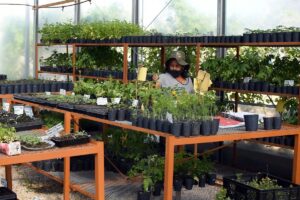
Beyond agriculture, the integration project spurred the creation of 57 new commercial spaces and a gastronomic patio, enhancing local entrepreneurship and tourism. Infrastructure improvements, such as the construction of 611 energy-efficient homes with solar water heaters, not only improved living conditions but also generated employment opportunities for residents.
This holistic approach demonstrates that when communities are empowered to lead greening and development initiatives, the results extend beyond environmental benefits, catalysing sustainable economic growth and resilience.
Community-led economic recovery in Baia Mare, Romania
Baia Mare, once Romania’s mining capital, is undergoing a transformative journey through the SPIRE (Smart Post-Industrial Regenerative Ecosystem) project. This initiative addresses the city’s legacy of heavy metal contamination by converting polluted lands into productive green spaces using phytoremediation techniques. The project not only aims to restore environmental health but also to stimulate economic revitalisation by fostering bio-based industries and community engagement.
A cornerstone of SPIRE is its emphasis on community involvement. The establishment of the SPIRE HUB, a makerspace, provides residents with resources and training to participate in eco-initiatives, promoting local entrepreneurship. Additionally, the introduction of the iLEU digital token which rewards citizens for sustainable actions, encouraging widespread participation in environmental efforts. These initiatives have led to the creation of bio-based startups focusing on sustainable construction materials, contributing to job creation and economic diversification.
Through the reclamation of over seven hectares of land and the active participation of thousands of citizens, SPIRE demonstrates how integrating environmental restoration with community-driven economic strategies can lead to sustainable urban regeneration.
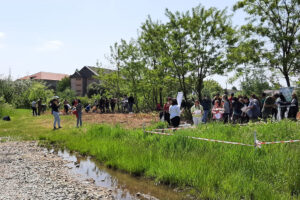
These examples, from the cool green spaces of Tebet Eco Park in Jakarta to rooftop gardens in Rio’s favelas, and community-led projects in Buenos Aires and Baia Mare, demonstrate that green infrastructure and urban greening can do much more than improve the environment. When designed with and for the people who live there, these projects can boost local incomes, reduce everyday costs, create jobs, and build new opportunities for learning and business. Not every community has equal access to these benefits. Often, those most vulnerable to climate impacts are also those with the fewest green spaces. But these stories show what’s possible when communities are included and supported in leading green change.
If we want greener, fairer cities, and to meet global climate goals, we need to see green infrastructure and urban greening not just as a decoration or investment, but as a real tool for helping people live better, healthier, and more economically secure lives.
Michael Casey,
Director, Evergreen Infrastructure,
Company Director , Australasian Green Infrastructure Network
Technical Panelist , AIPH World Green Cities Awards
E: michael@evergreeninfrastructure.com.au
